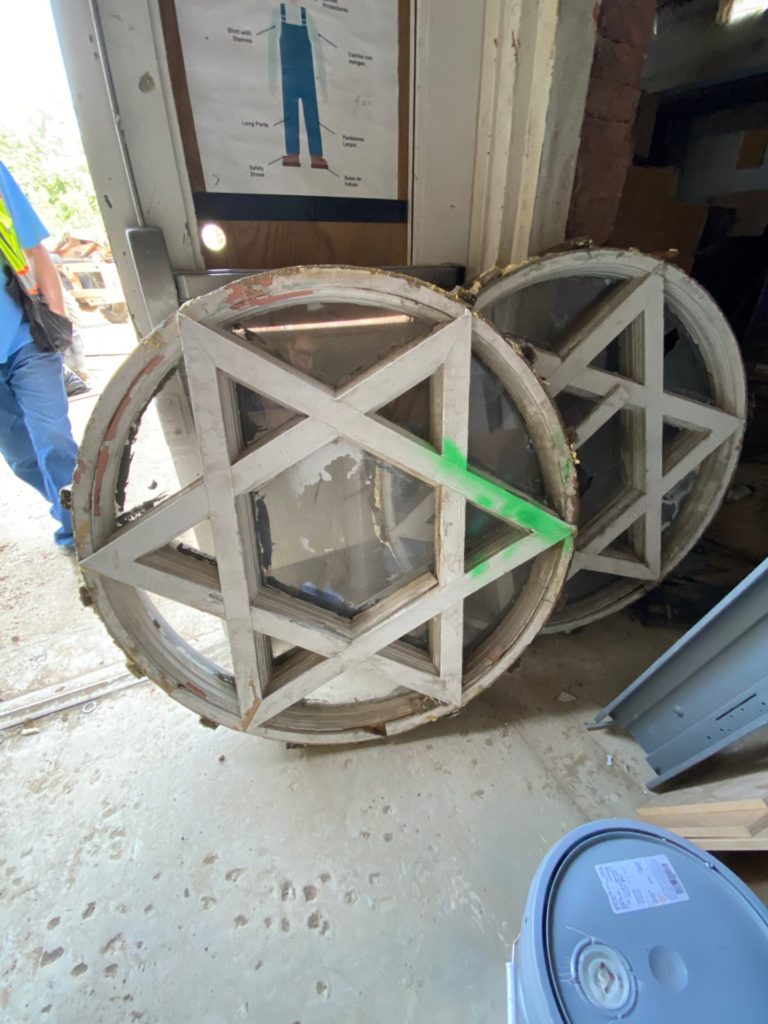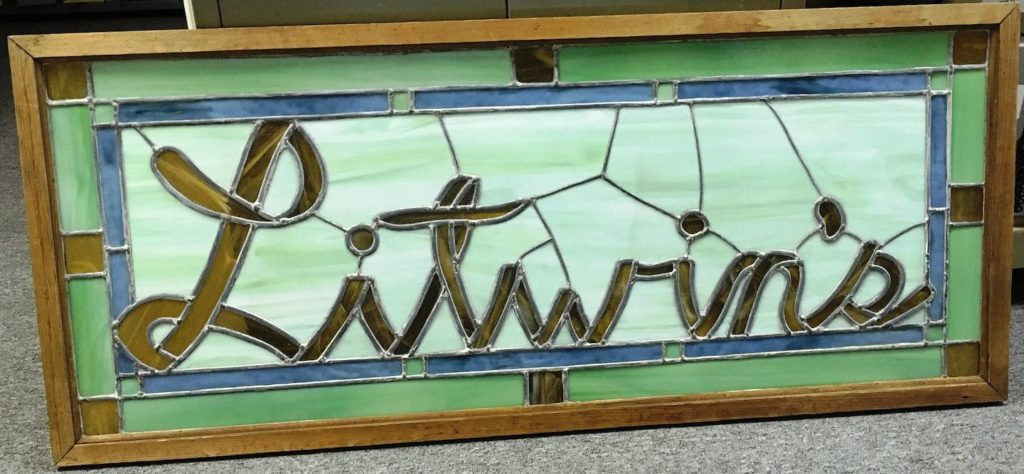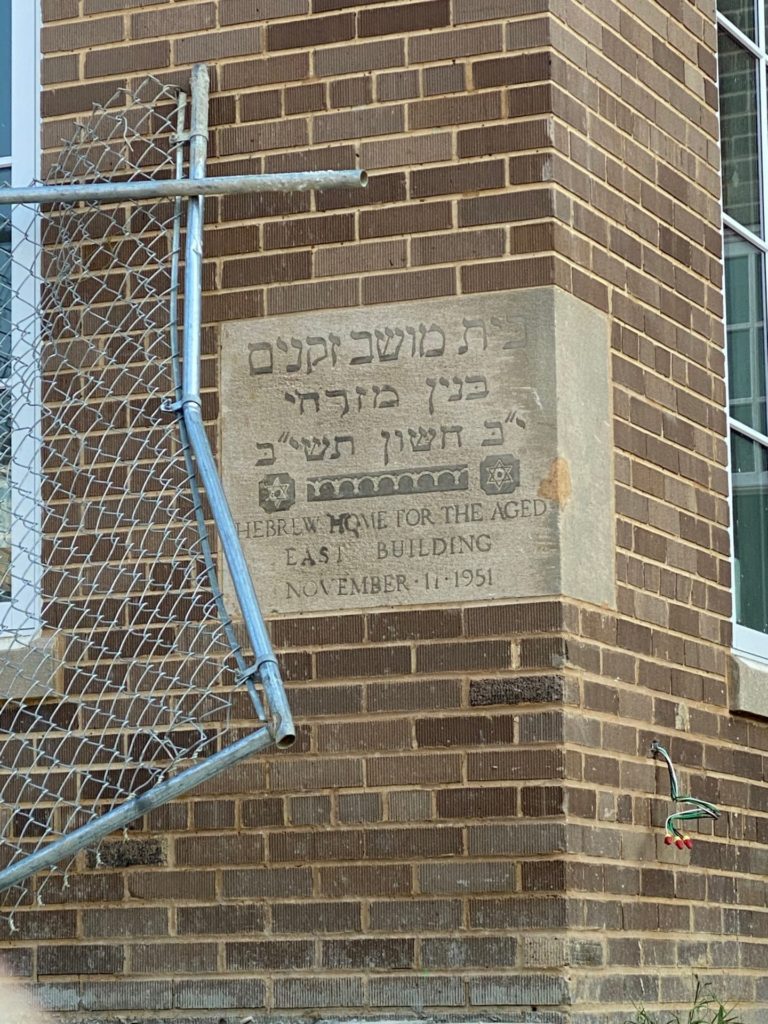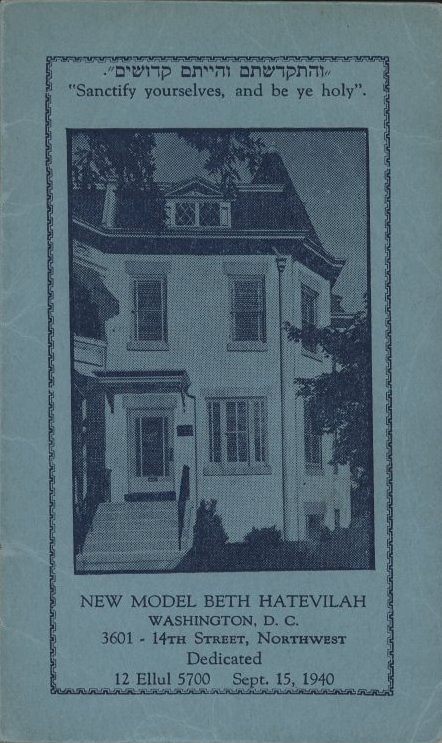The Whole Spiel
Angels in the Architecture
July 12, 2021
A few weeks ago my family and I drove to Wisconsin to visit my parents. It’s a long drive, and we stopped a lot along the way. On a hot afternoon in Sandusky, Ohio, we did what we always do when we walk through any American downtown: look up, and play “spot the Jewish name on a building.” It always works, although sometimes we need Google to help with the classic “was this person Jewish or just German” conundrum (Lebensburger in Sandusky: both). Perhaps because it was so invigorating to be in a town I’d never been to before—a sensation I hadn’t had during the pandemic—I thought about how important it is to me to always look up and “find the Jews.”

Star of David window from the Hebrew Home on Spring Street. Photograph by Jonathan Edelman.
Seeing Jewish names and symbols in the architecture feels like a touchstone, even if sometimes those names represent histories I would not otherwise embrace. I don’t know what these peoples’ personal lives or business policies were like, besides what I can look up on my phone—Did they pay well? Did they hire Black employees and serve Black customers? Did they contribute in helpful ways to the life of the town? But I do know that the presence of Jewish names in the architecture is a concrete (or brick) example of “we were here” graffiti. We were literally written in stone.


Back in the DC area, there is no shortage of Jewish symbols and names on buildings. CJM’s collection includes several signs that represent a former Jewish business, but sometimes, if we’re lucky, the name or symbol is etched into the building. This helps situate the Jewish community in the wider context of a growing presence in town and the increased visibility of Jewish merchants and institutions helps the Museum tell their story.
The city’s first synagogue building—the 2-story brick building for Adas Israel Congregation built in 1876 that will be part of our new museum when CJM opens next year—does not feature Jewish symbols. However, the reluctance, if that’s what it was, to put the Jewish-ness into the architecture, would change over time. In fact, Adas Israel’s next building featured a giant star of David in a stained-glass rose window. The window was changed out by Turner Memorial AME Church in 1951, but a new one was replicated when Sixth & I opened at the site in 2004.

Booklet containing rules and regulations for the use of the community mikvah at 3601 14th Street, NW, dedicated September 15, 1940. Booklet includes photograph of the building on front cover. Inside front cover reads: “The Model Mikvah is a Community Undertaking not a business venture. Features individual mikvah, ever changing water, beauty parlor, reception room, strict sanitation.”
Last week, my colleague Jonathan Edelman went to the site of the old Hebrew Home on Spring Road in Petworth to look at a set of star-of-David windows that have been removed during renovation. These windows, and the stars of David in the banister at the old Model Mikvah on 14th Street, remind me that it’s not only retail stores and synagogues with Jewish symbols. Architectural evidence of Jewish life in the city is readily accessible—as long as you remember to look up. It’s like that song we learned at camp back in the 1970s: “Wherever you go, there’s always someone Jewish.”